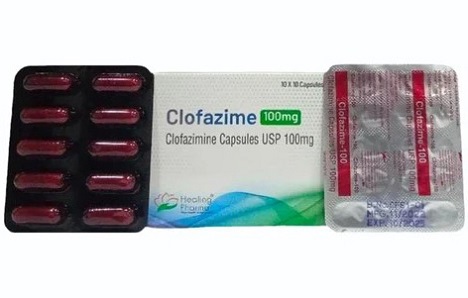Nikhil Prasad Fact checked by:Thailand Medical News Team Mar 05, 2024 1 year, 9 months, 4 weeks, 15 hours, 40 minutes ago
COVID-19 News: In the ongoing battle against the COVID-19 pandemic, the quest for effective antiviral treatments has led researchers to explore the repurposing of existing drugs. Among these, Clofazimine and Arbidol have emerged as promising candidates, demonstrating their efficacy as in vitro SARS-CoV-2 fusion inhibitors. This
COVID-19 News report delves into a study conducted at Thomas Jefferson University in Pennsylvania, USA, shedding light on Clofazimine's potential as a potent antiviral agent against the novel coronavirus.
 Clofazimine Identified As A Potential Antiviral Against SARS-CoV-2
Background and Drug Repurposing Efforts
Clofazimine Identified As A Potential Antiviral Against SARS-CoV-2
Background and Drug Repurposing Efforts
Early in the pandemic, Arbidol and Clofazimine were identified through drug repurposing screens as clinical drugs exhibiting in vitro inhibitory effects on SARS-CoV-2. Clofazimine, in particular, stood out in multiple drug repurposing efforts, showcasing its potential as a promising compound for COVID-19 treatment. Drug repurposing plays a crucial role in identifying alternative drugs for clinical use, especially when patients cannot receive standard treatment. Ongoing studies investigating direct-acting antivirals contribute to understanding their mechanisms and molecular basis for broad-spectrum activity.
Both Arbidol and Clofazimine have been reported as SARS-CoV-2 viral fusion inhibitors, showcasing synergistic antiviral activity with other inhibitors such as Remdesivir. While Arbidol acted as a partial inhibitor, Clofazimine demonstrated full inhibition of SARS-CoV-2 across various cell types, including physiologically relevant ones, and exhibited promising preclinical antiviral activity in a golden Syrian hamster model.
Despite its clinical drawbacks and adverse effects associated with systemic use, Clofazimine remains a crucial drug with extensive worldwide experience in treating leprosy and drug-resistant tuberculosis. Efforts to mitigate its side effects are underway through the development of derivatives with improved properties.
The drug's inclusion in the World Health Organization's List of Essential Medicines underscores its importance, making it a potential candidate for COVID-19 treatment.
Experimental Insights: Clofazimine Binding to S2 Segment
To understand Clofazimine's mechanism of action as a fusion inhibitor, researchers employed a Surface Plasmon Resonance (SPR) binding assay. The study compared the binding of Clofazimine, Toremifene, Arbidol, and other Arbidol derivatives to the S2 segment of the Spike protein. Notably, Clofazimine exhibited the most reliable and high-quality binding data among the compounds tested.
Utilizing molecular docking, researchers identified two possible small-molecule binding sites for fusion inhibitors on the S2 segment in the prefusion conformation. The study also explored the structure-activity-relationship (SAR) of newly reported Clofazimine derivatives, supporting the proposed binding site on the S2 segment.
Discussion: Implications and Me
chanism of Action
The study's findings suggest potential broad-spectrum antiviral activity of Clofazimine due to its binding to the S2 segment. Notably, the S2 segment exhibits greater conservation in sequence across coronavirus strains, making it a promising target for fusion inhibitors. The proposed binding site aligns with experimentally determined coronavirus structures, rationalizing Clofazimine's activity against related coronaviruses such as SARS-CoV, MERS, hCoV-229E, and hCoV-OC43.
The study's structural insights into Clofazimine's binding site offer a plausible explanation for its broad-spectrum antiviral activity. The conserved residues forming the binding site on the S2 segment suggest a potential strategy to avoid viral resistance mutations. The model predicts diminishing activity in more distantly related coronaviruses, emphasizing the importance of understanding the specific mechanisms of fusion inhibitors.
Conclusion: Clofazimine as a Promising Fusion Inhibitor
In conclusion, Clofazimine has emerged as a potent SARS-CoV-2 fusion inhibitor, displaying robust antiviral activity in various assays and preclinical models. The study's structural insights provide a foundation for further research and the development of improved fusion inhibitors targeting the S2 segment. Clofazimine's potential synergy with other antivirals, such as Remdesivir, opens avenues for combination therapies. Additionally, recent observations of Clofazimine inhibiting Spike-induced procoagulant activity may broaden its clinical applications beyond COVID-19, offering hope for addressing related pathologies. While challenges remain, Clofazimine stands as a promising candidate in the ongoing efforts to combat the global pandemic.
The study findings were published on a preprint server and are being peer reviewed.
https://www.preprints.org/manuscript/202403.0096/v1
For the latest
COVID-19 News, keep on logging to Thailand Medical News.
